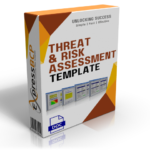Imagine this: A major storm hits, and your operations are on the brink of a shutdown. What’s your next move? If you’re scrambling for an answer, it’s time to know why tabletop exercises are a must for your business continuity strategy and consider tabletop exercises—your crisis response rehearsal.
Nearly 75% of companies that conduct regular tabletop exercises report improved crisis handling, yet only 49% have actually run an exercise in the past year!
Let’s dive into how these simulations not only prepare your teams for unexpected disruptions but also strengthen your overall business resilience. I’ll guide you through setting up your first exercise, ensuring it’s not just another meeting but a pivotal part of your contingency planning.
What is a Tabletop Exercise?
A tabletop exercise involves gathering team leaders and key personnel to walk through specific disaster or crisis scenarios in a structured yet informal environment. The goal? To explore response protocols, uncover gaps in your plans, and enhance your team’s decision-making capabilities under pressure—all without the stakes of a real-world emergency.
Step-by-Step Guide to Conducting Your First Tabletop Exercise
Step 1: Define Clear Objectives
Before you call everyone to the table, pinpoint what you aim to achieve. Whether it’s testing a specific part of your plan, like IT recovery strategies, or assessing communication channels during a power outage, clear objectives will steer your scenario and keep discussions focused.
Step 2: Develop Realistic Scenarios
Craft scenarios that are probable in your business context. If you’re in a region prone to hurricanes, simulate a storm surge scenario. Or, if cyber threats are a looming concern, consider a data breach or ransomware attack. Realism in these simulations makes the exercise engaging and practical.
Step 3: Prepare Discussion Prompts
To guarantee productive dialogue, prepare a list of discussion prompts related to each phase of the scenario. Questions like, “What are the immediate steps?” and “Who do we inform first?” prompt critical thinking and problem-solving.
Step 4: Involve the Right People
Include participants from various departments—IT, HR, operations, and executive leadership. Their diverse perspectives will enrich the exercise and give insights into how departmental plans integrate during a crisis.
Step 5: Facilitate the Session
As the facilitator, guide the discussion but allow participants to steer the conversation. Encourage them to discuss their roles and responses based on the unfolding scenario. Remember, the goal is to find improvements to your plans, not to point out individual mistakes.
Step 6: Review and Revise Your Plans
Post-exercise, gather feedback on what worked, what didn’t, and what could be unclear or missing in your current plans. Use this feedback to refine your business continuity plans and policies.
Enhance Your Exercise with Professional Templates
Get a head start on your tabletop exercises with our professional BCP templates. Designed to streamline your planning process, these tools guarantee you’re not starting from scratch, making your exercises more effective and efficient.
Key Benefits of Regular Tabletop Exercises
- Improved Preparedness: Regular drills make your team more adept at responding to emergencies without panic.
- Enhanced Interdepartmental Communication: These exercises foster better communication and teamwork across different parts of your organization.
- Identification of Gaps: Simulations expose flaws in your plans before they can be exploited in a real crisis.
Where to From Here?
Tabletop exercises are more than just a good practice; they are an indispensable part of your business continuity strategy. They turn theoretical plans into practical, actionable strategies that can be the difference between floundering and flourishing in the face of adversity.
Start planning your first tabletop exercise today. It’s an investment in your company’s resilience and a testament to your commitment to not just surviving, but thriving, no matter what challenges lie ahead.







